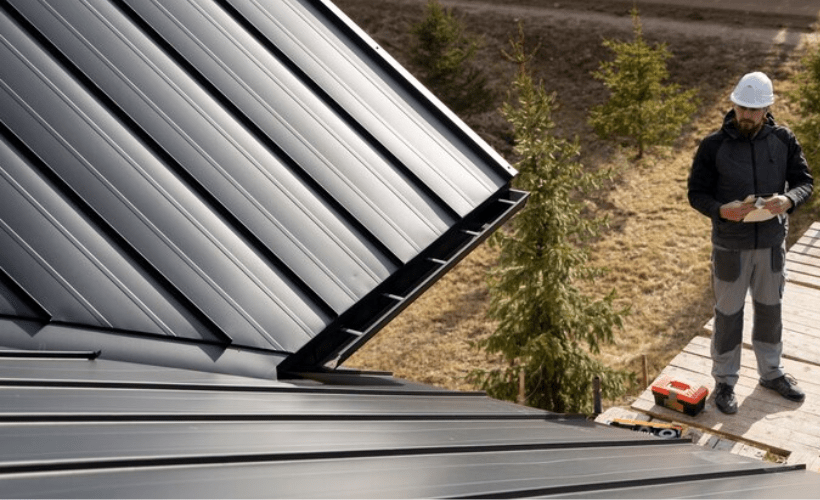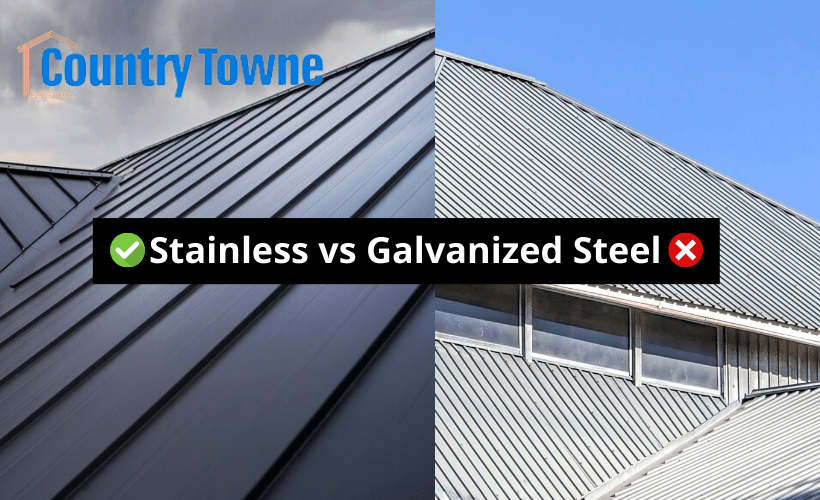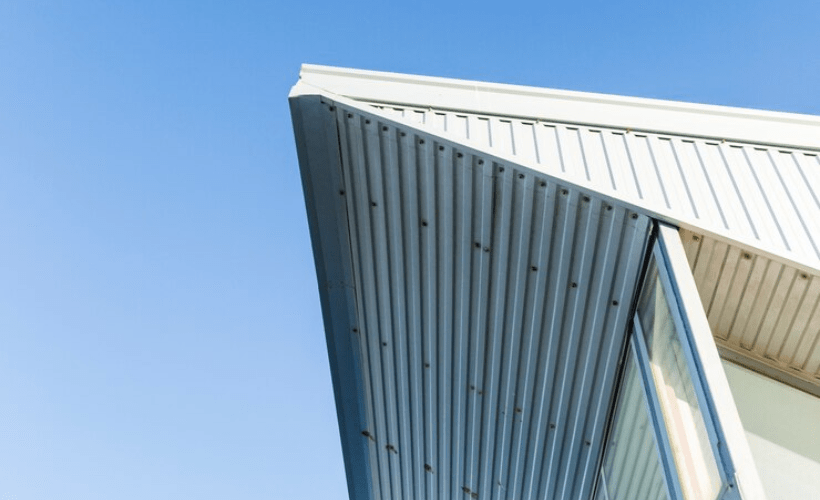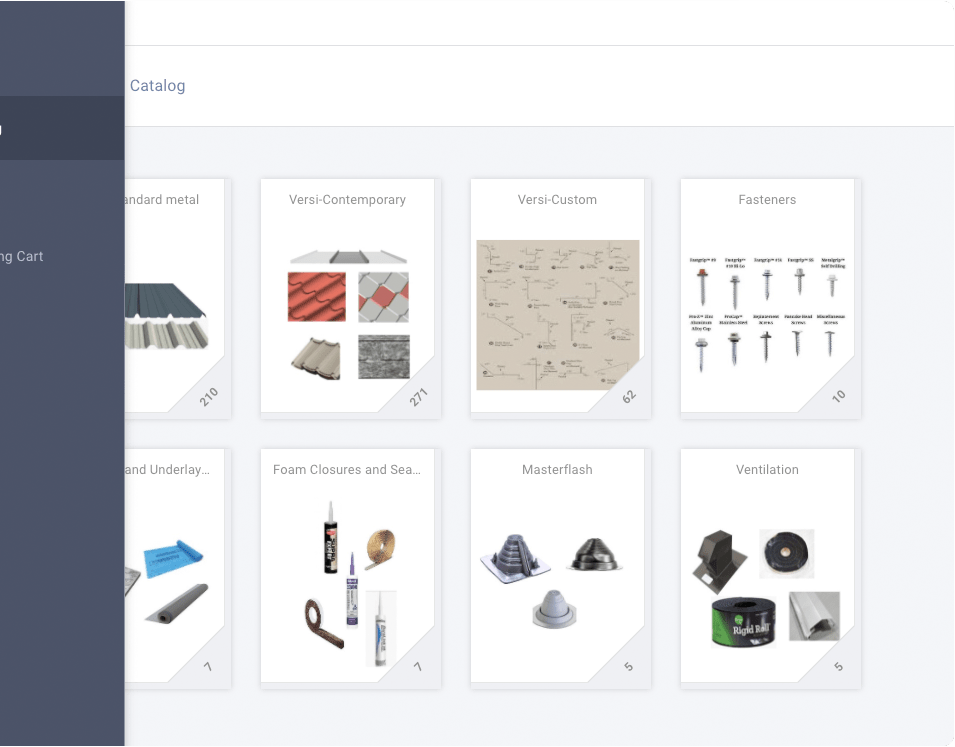Metal roofing is a rage in Canada, and steel is a particularly popular choice. In steel, the two common variants are stainless steel and galvanized steel.
Both materials offer excellent durability and strength, but they’re quite different. Before you invest in steel roofing, you must understand these differences.
If you’re confused about which material is the right choice for your home, don’t worry! Read on to make an informed decision about your roofing choice.

Understanding Stainless Steel Roofing
Stainless steel is an alloy, i.e., a mixture of steel with other materials, primarily chromium. This makes it uniquely strong and corrosion-resistant.
Composition
Stainless steel’s primary characteristic is its chromium content, which is 10.5%- 12%. Some grades may also contain other elements like nickel or molybdenum. There are about 60 grades of stainless steel belonging to various categories.
Manufacturing Process
Stainless steel is formed by combining the raw materials in their molten state. They are refined to reach the desired grade, and the mix is cast into slabs or ingots.
As the mixture cools and hardens, it forms a solid metal substance, i.e., stainless steel composite. It is then treated with an acid to remove impurities.
Next, the solid material is hot-rolled and cold-rolled into thinner sheets. The material also undergoes annealing, i.e., heat treatment to soften it, relieve stresses, and boost its original properties.
Features and Benefits
Stainless steel is known for the following properties:
- Corrosion-resistance: This material is ideal for wet or humid environments or places with salty air.
- Intrinsic strength: Stainless steel’s composition makes it strong and durable internally.
- Longevity: Stainless steel roofs can last 50-100 years.
- Recyclability: It doesn’t perish and can be recycled, reducing production waste and energy usage.
Understanding Galvanized Steel Roofing
Galvanized steel is regular steel coated with a protective layer of zinc. This zinc layer protects the underlying steel from rust.
Composition
The base of galvanized steel is plain carbon steel, a carbon and iron alloy. What sets it apart is the zinc coating on top.
This defensive layer is quite thin and measured in microns. Compared to stainless steel, galvanized steel has fewer grades and categories.
Manufacturing Process
The most common method of manufacturing galvanized steel is hot-dipping. First, regular molten steel is cleaned to remove oils or contaminants and shaped into plates or sheets.
It is then immersed in a bath of molten zinc metal to form an outer layer. This dipping process may also be performed after the steel has undergone bending or welding.
The zinc-coated steel is then allowed to cool to solidify the protective layer. Another method of galvanization is electrolysis or electroplating, producing electro-galvanized steel.
Features and Benefits
Galvanized steel is popular because of the following properties:
- Corrosion resistance: The protective zinc layer shields the metal against rust even when scratched.
- Affordability: There’s no compositional change in making this type of steel, reducing its cost.
- Durability: Galvanized steel roofing systems can last 30-50 years.
- Recyclability: It can be recycled with other steel scrap in an electric arc furnace.
Comparing Stainless Steel vs Galvanized Steel Roofing
Both stainless steel and galvanized steel roofing are excellent choices. But which type of metal roof is ideal for your property?
There are factors to consider while making the right choice for metal roofing.
- Strength: Stainless steel is stronger than galvanized steel due to the high chromium content. As a result, it is more resistant to warping, denting, etc.
- Malleability: Galvanized steel is a softer metal, making it easier to work with and shape into detailed designs. Unless stainless steel has other components like nickel, it’s harder to bend.
- Corrosion resistance: Stainless steel is corrosion-resistant due to the enduring chromium oxide layer. Galvanized steel’s rust resistance is superficial, and the protective zinc layer may wear off.
- Longevity: Stainless steel roofs last a building’s lifetime, typically 50-100 years. While galvanized steel is long-lasting, its life span is 30-50 years, depending on the quality, climate, and maintenance.
- Maintenance: Stainless steel roofing requires minimal maintenance. While galvanized steel roofing is also low maintenance, it must be repainted occasionally to sustain corrosion resistance.
- Appearance: Galvanized steel has a rustic, industrial look. On the other hand, stainless steel has a smooth, sleek appearance.
- Cost: Galvanized steel roofing is an affordable option. Stainless steel costs more because of the elaborate manufacturing process, raw materials, and complex installation.
Galvanized Steel vs Stainless Steel: Which is the Ideal
Galvanized and stainless steel are both popular choices for your home’s structural integrity. They are eco-friendly materials and reduce heating costs.
Stainless steel roofing offers more strength, durability, and long-term cost efficiency. But if lower upfront cost is your priority, galvanized steel roofing is a better choice.
As for aesthetics, stainless steel offers a more modern look for contemporary with a polished finish. However, galvanized steel roofing is better if you prefer a rugged finish for a fusion look.
Contact Country Towne
Are you considering stainless steel or galvanized steel for your metal roofing project? Do you need help with the right metal roofing choice?
Country Towne is here for you! Our premium roofing materials boost any property’s curb appeal, resale value, and resilience.
We offer various types of metal roofing materials of the highest grades. Our services include installation and proper guidance to help you choose the ideal roofing and siding.




Share This Article
Choose Your Platform: Facebook Twitter Google Plus Linkedin